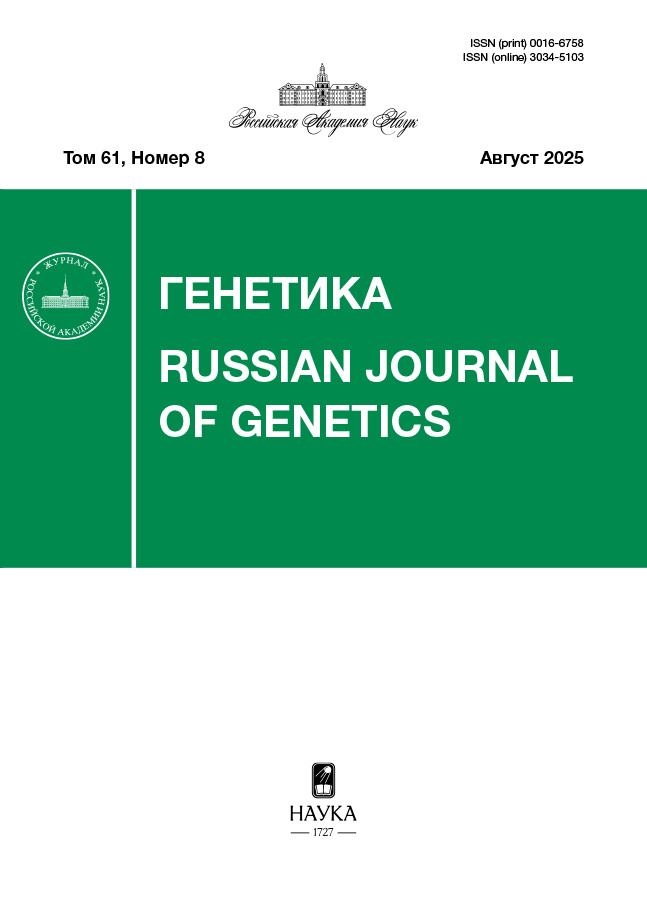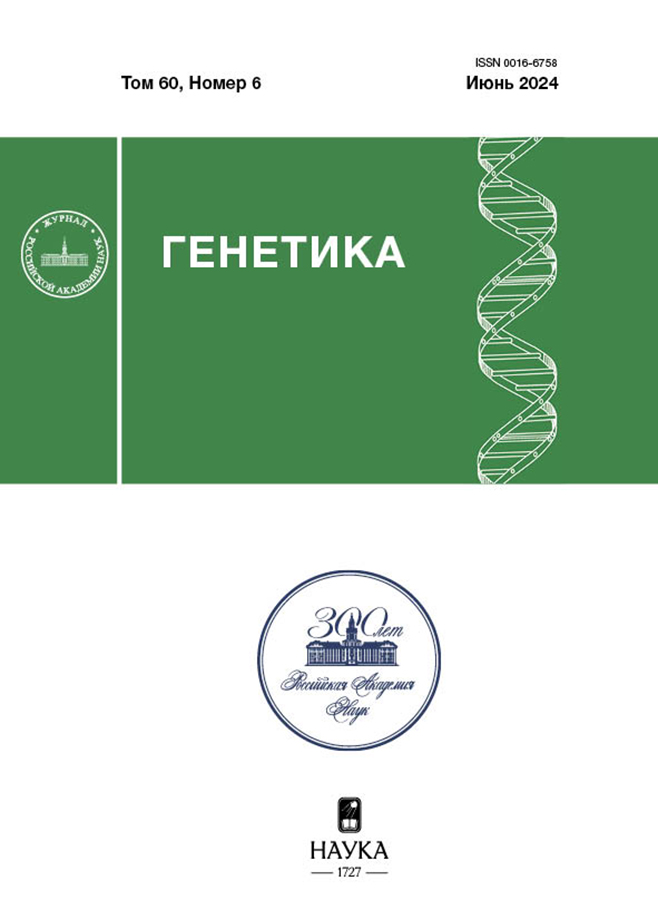L31-транспозоны шестилучевых кораллов (Hexacorallia): распространение, разнообразие и эволюция
- Авторы: Пузакова Л.В.1, Пузаков М.В.1, Пузакова П.М.2
-
Учреждения:
- Федеральный исследовательский центр “Институт биологии южных морей им. А.О. Ковалевского” Российской академии наук
- Филиал Московского государственного университета им. М.В. Ломоносова, в г. Севастополе
- Выпуск: Том 60, № 6 (2024)
- Страницы: 22-30
- Раздел: МОЛЕКУЛЯРНАЯ ГЕНЕТИКА
- URL: https://rjonco.com/0016-6758/article/view/667243
- DOI: https://doi.org/10.31857/S0016675824060027
- EDN: https://elibrary.ru/BYEJMV
- ID: 667243
Цитировать
Полный текст
Аннотация
Мобильные генетические элементы (МГЭ) эукариот – ретротранспозоны и ДНК-транспозоны – это нуклеотидные последовательности, способные перемещаться из локуса в локус генома, а также между геномами различных организмов. ДНК-транспозоны L31 являются древней и разнообразной группой, входящей в большую группу IS630/Tc1/mariner. L31-транспозоны не получили широкого распространения и присутствуют у ограниченного числа таксонов. Помимо последовательности, кодирующей DDE/D-транспозазу, L31-транспозоны несут еще одну ОРС (ОРС2). Детальный анализ элементов L31 в геномах шестилучевых кораллов позволил получить подробную информацию о распространении, разнообразии и структуре элементов. Были выявлены две большие группы, L31-duo и L31-uno, отличающиеся и по паттерну каталитического домена и по структуре. В результате реконструкции эволюции L31-транспозонов было предположено, что шестилучевые кораллы получили L31-транспозоны от двустворчатых моллюсков. При этом выщепившаяся группа L31-uno, возможно, была получена моллюсками в результате горизонтального переноса уже от кораллов. Исследования распространения и разнообразия МГЭ у морских беспозвоночных будут способствовать лучшему пониманию процессов эволюции МГЭ и их роли в эволюционной истории видов.
Ключевые слова
Полный текст
Об авторах
Л. В. Пузакова
Федеральный исследовательский центр “Институт биологии южных морей им. А.О. Ковалевского” Российской академии наук
Email: puzakov.mikh@yandex.ru
Россия, Севастополь, 299011
М. В. Пузаков
Федеральный исследовательский центр “Институт биологии южных морей им. А.О. Ковалевского” Российской академии наук
Автор, ответственный за переписку.
Email: puzakov.mikh@yandex.ru
Россия, Севастополь, 299011
П. М. Пузакова
Филиал Московского государственного университета им. М.В. Ломоносова, в г. Севастополе
Email: puzakov.mikh@yandex.ru
Россия, Севастополь, 299001
Список литературы
- Kojima K.K. Structural and sequence diversity of eukaryotic transposable elements // Genes Genet. Syst. 2020. V. 94. № 6. P. 233–252. https://doi.org/10.1266/ggs.18-00024
- Wells J.N., Feschotte C.A. Field guide to eukaryotic transposable elements // Annu. Rev. Genet. 2020. V. 54. P. 539–561. https://doi.org/10.1146 annurev-genet-040620-022145
- Wicker T., Sabot F., Hua-Van A. et al. A unified classification system for eukaryotic transposable elements // Nat. Rev. Genet. 2007. V. 8. № 12. P. 973–982. https://doi.org/10.1038/nrg2165
- Kapitonov V.V., Jurka J. A universal classification of eukaryotic transposable elements implemented in Repbase // Nat. Rev. Genet. 2008. V. 9. P. 411–412. https://doi.org/10.1038/nrg2165-c1
- Yuan Y.W., Wessler S.R. The catalytic domain of all eukaryotic cut-and-paste transposase superfamilies // Proc. Natl Acad. Sci. USA. 2011. V. 108. № 19. P. 7884–7889. https://doi.org/10.1073/pnas.1104208108
- Arkhipova I.R. Using bioinformatic and phylogenetic approaches to classify transposable elements and understand their complex evolutionary histories // Mob. DNA. 2017. V. 8. № 19. https://doi.org/10.1186/s13100-017-0103-2
- Gao B., Wang Y.L., Diaby M. et al. Evolution of pogo, a separate superfamily of IS630-Tc1-mariner transposons, revealing recurrent domestication events in vertebrates // Mob. DNA. 2020. V. 11. № 25.
- Shi S., Puzakov M., Guan Z. et al. Prokaryotic and eukaryotic horizontal transfer of Sailor (dd82e), a new superfamily of IS630-Tc1-Mariner DNA-transposons // Biology (Basel). 2021. V. 10. № 10. https://doi.org/10.3390/biology10101005
- Puzakov M.V., Puzakova L.V. Structure and evolution of DNA transposons of the L31 superfamily in Bivalves // Mol. Biol. 2024. V. 58. № 1. P. 57–75. https://doi.org/10.1134/S0026893324010114
- Shi S., Puzakov M.V., Puzakova L.V. et al. Hiker, a new family of DNA transposons encoding transposases with DD35E motifs, displays a distinct phylogenetic relationship with most known DNA transposon families of IS630-Tc1-mariner (ITm) // Mol. Phylog. Evol. 2023. V. 188. https://doi.org/10.1016/j.ympev.2023.107906
- Aziz R.K., Breitbart M., Edwards R.A. Transposases are the most abundant, most ubiquitous genes in nature // Nucl. Ac. Res. 2010. V. 38. № 13. P. 4207–4217. https://doi.org/10.1093/nar/gkq140
- Puzakov M.V., Puzakova L.V., Cheresiz S.V. An Analysis of IS630/Tc1/mariner transposons in the genome of a pacific oyster Crassostrea gigas // J. Mol. Evol. 2018. V. 86. № 8. P. 566–580. https://doi.org/10.1007/s00239-018-9868-2
- Dupeyron M., Baril T., Bass C., Hayward A. Phylogenetic analysis of the Tc1/mariner superfamily reveals the unexplored diversity of pogo-like elements // Mob. DNA. 2020. V. 11. № 21. https://doi.org/10.1186/s13100-020-00212-0
- Tellier M., Bouuaert C.C., Chalmers R. Mariner and the ITm superfamily of transposons // Microbiol. Spectr. 2015. V. 3. № 2. https://doi.org/10.1128/microbiolspec.MDNA3-0033-2014
- Ivics Z., Izsvák Z. Sleeping Beauty transposition // Microbiol. Spectr. 2015. V. 3. № 2. https://doi.org/10.1128/microbiolspec.MDNA3-0042-2014
- Jahn C.L., Doktor S.Z., Frels J.S. et al. Structures of the Euplotes crassus Tec1 and Tec2 elements: Identification of putative transposase coding regions // Gene. 1993. V. 133. № 1. P. 71–78. https://doi.org/10.1016/0378-1119(93)90226-s
- Chen X., Landweber L.F. Phylogenomic analysis reveals genome-wide purifying selection on TBE transposons in the ciliate Oxytricha // Mob. DNA. 2016. V. 7. № 2. https://doi.org/10.1186/s13100-016-0057-9
- Dupeyron M., Singh K.S., Bass C., Hayward A. Evolution of Mutator transposable elements across eukaryotic diversity // Mob. DNA. 2019. V. 10. № 12. https://doi.org/10.1186/s13100-019-0153-8
- Doak T.G., Witherspoon D.J., Jahn C.L., Herrick G. Selection on the genes of Euplotes crassus Tec1 and Tec2 transposons: Evolutionary appearance of a programmed frameshift in a Tec2 gene encoding a tyrosine family site-specific recombinase // Eukaryot. Cell. 2003. V. 2. № 1. P. 95–102. https://doi.org/10.1128/EC.2.1.95-102.2003
- Altschul S.F., Madden T.L., Schäffer A.A. et al. Gapped BLAST and PSI-BLAST: A new generation of protein database search programs // Nucl. Ac. Res. 1997. V. 25. № 17. P. 3389–3402. https://doi.org/10.1093/nar/25.17.3389
- Buchan D.W.A., Jones D.T. The PSIPRED protein analysis workbench: 20 years on // Nucl. Ac. Res. 2019. V. 47. P. 402–407. https://doi.org/10.1093/nar/gkz297
- Crooks G.E., Hon G., Chandonia J.M., Brenner S.E. WebLogo: A sequence logo generator // Genome Res. 2004. V. 14. № 6. P. 1188–1190. https://doi.org/10.1101/gr.849004
- Hoang D.T., Chernomor O., von Haeseler A. et al. UFBoot2: Improving the ultrafast bootstrap approximation // Mol. Biol. Evol. 2018. V. 35. № 2. P. 518–522. https://doi.org/10.1093/molbev/msx281
- Kalyaanamoorthy S., Minh B.Q., Wong T.K.F. et al. ModelFinder: Fast model selection for accurate phylogenetic estimates // Nat. Methods. 2017. V. 14. № 6. P. 587–589. https://doi.org/10.1038/nmeth.4285
- Yamada K.D., Tomii K., Katoh K. Application of the MAFFT sequence alignment program to large data – Reexamination of the usefulness of chained guide trees // Bioinformatics. V. 32. № 21. P. 3246–3251. https://doi.org/10.1093/bioinformatics/btw4122016
- Kumar M., Suleski J.E., Craig A.E. et al. TimeTree 5: An expanded resource for species divergence times // Mol. Biol. Evol. 2022. V. 39(8). https://doi.org/10.1093/molbev/msac174
- Wallau G. L., Ortiz M. F., Loreto E. L. Horizontal transposon transfer in eukarya: detection, bias, and perspectives // Genome Biol. Evol. 2012. V. 4. № 8. P. 689–699. https://doi.org/10.1093/gbe/evs055
- Melo E.S., Wallau G.L. Mosquito genomes are frequently invaded by transposable elements through horizontal transfer // PLoS Genet. 2020. V. 16(11). https://doi.org/10.1371/journal.pgen.1008946
- Blumenstiel J.P. Birth, school, work, death, and resurrection: The life stages and dynamics of transposable element proliferation // Genes (Basel). 2019. V. 10. № 5. https://doi.org/10.3390/genes10050336
Дополнительные файлы














